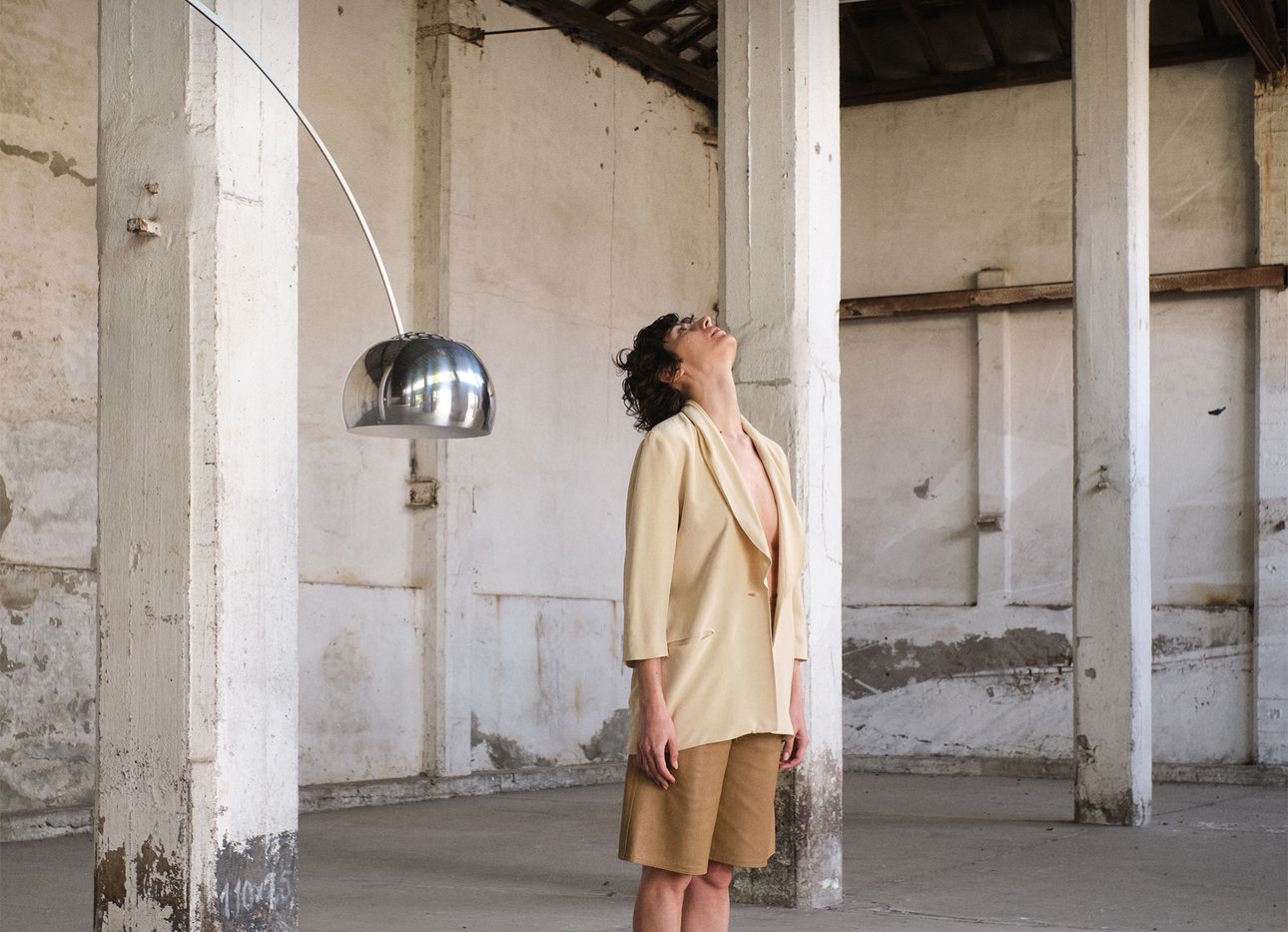
Milan Design Week 2022 Preview: Salone del Mobile Is Back, But Not (Yet) in Full Force
Emerging from the pandemic, the design industry, like most of us, has changed. The past two and a half years, which have involved an incalculable loss of life and calls for social-justice reform amidst an increasingly pressing climate crisis, have formed a solemn backdrop. In March 2020, almost at once, in the locked-down lives of many, the notion of “home” and the role of design shifted. As opposed to straight function or beauty, design came to represent a sense of greater comfort, healing, and care.
Now, just a few days away from Italy’s 60th Salone del Mobile design and furniture fair (June 7–12), and the concurrent citywide presentations of Milan Design Week—which together form what has historically been seen as the most significant global showcase of trends and ideas in the trade—the impacts of this historic period on design will come into focus. The festivities follow much anticipation: After canceling its 2020 iteration, Salone presented a pared-down version, called “Supersalone,” last September, and postponed this year’s fair from April to June, followed by weeks of wondering if the FederlegnoArredo, Salone’s governing body, would enact further delays. “This Salone will be really important from many perspectives,” says architect and designer Alberto Biagetti, who runs the Milan-based studio Atelier Biagetti with his wife, the artist Laura Baldassari. “It’s a way of bringing us back to life. I think it’s going to be magic.”
Biagetti and Baldassari have spent most of the pandemic in Milan, thinking about how their definition of home expanded to include parks, streets, and the city beyond its walls, and how all the extra time during lockdown helped them to see such places, in a way, for the first time—with childlike wonder. They also saw how isolation affected their young daughter, who approached them one day with a drawing. “She drew a landscape full of giant cats, and it was surreal and imaginary,” Baldassari says. “She told us, ‘I would love to have a big cat to hug.’ We understood that probably everyone would love a big cat to hug in that moment, to experience that kind of unconditional love.”
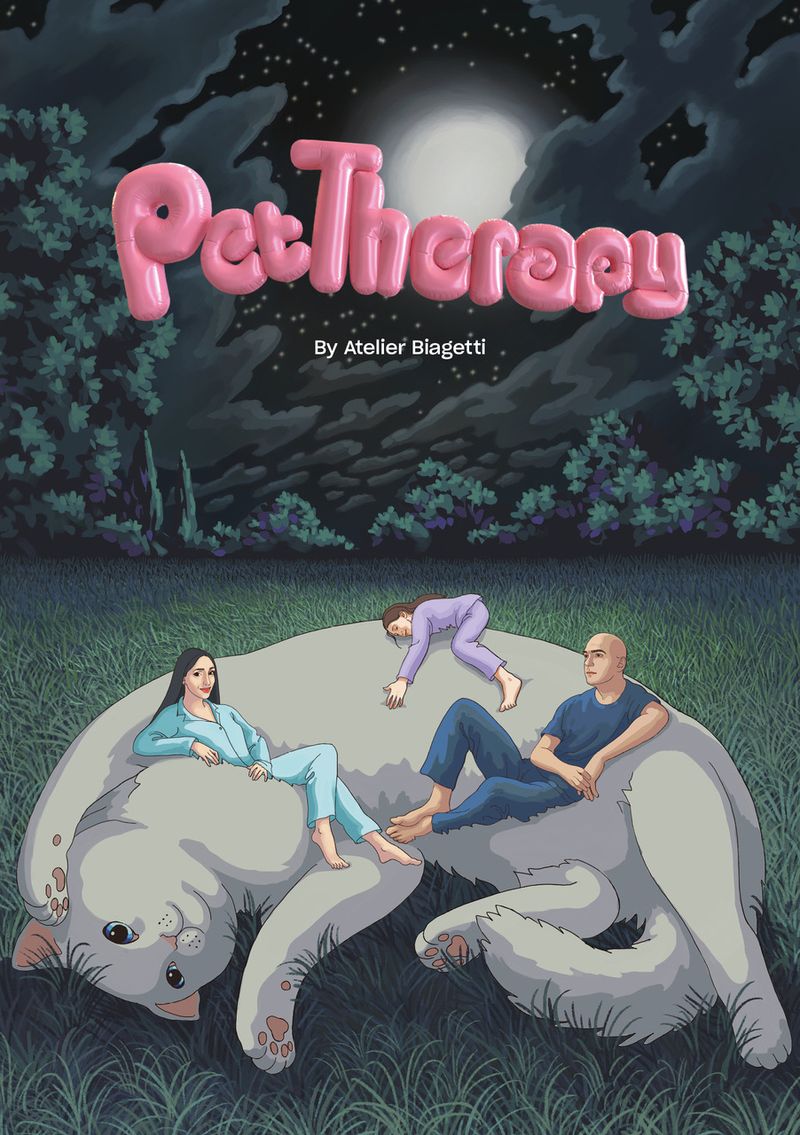
Biagetti and Baldassari have channeled the artwork into an interactive, indoor-outdoor installation called Pet Therapy (Piazza Arcole, 4), debuting next week, filled with outsize yet functional feline-shaped sculptures. It may be an out-there concept, but it’s milder than, or at least on par with, the studio’s previous Milan presentations, which included a conceptual clinic where visitors could receive “treatments” to re-establish their sexual equilibriums. The designers said that that kind of outrageousness or irony didn’t feel right in this particular moment. For them, creating a sense of awe and interspecies awareness was more essential.
Apparently, other designers are thinking similarly. The Italian studio Formafantasma, a creative collaboration between designers Andrea Trimarchi and Simone Farresin, has developed the symposium Prada Frames (Via Brera, 28), focused on forests. It will consider how design and science can be agents of change in these vital ecosystems through presentations by leaders from various disciplines, including curator Paola Antonelli, architect Stefano Boeri, writer Amitav Ghosh, artist and researcher Sissel Tolaas, and anthropologist Anna Tsing. Over at the Teatro dei Filodrammatici, the Italian furniture company Moroso and the Danish textile company Kvadrat will mount the plant-focused spectacle Forest Wandering (Via Filodrammatici, 1). Created with Swedish designers Sofia Lagerkvist and Anna Lindgren of Front Design, the immersive experience of light, sound, and projected images aims to evoke the natural environment, and builds on the designers’ research into the therapeutic effects of nature on people’s physical and mental health. (Moroso, on the occasion of its 70th anniversary, will additionally present new pieces by Patricia Urquiola, Front Design, Jonathan Olivares, and Wieki Somers in an installation with Kvadrat Really, the fabric brand’s upcycled materials arm, in Moroso’s Milan showroom, at Via Pontaccio, 8/10.)
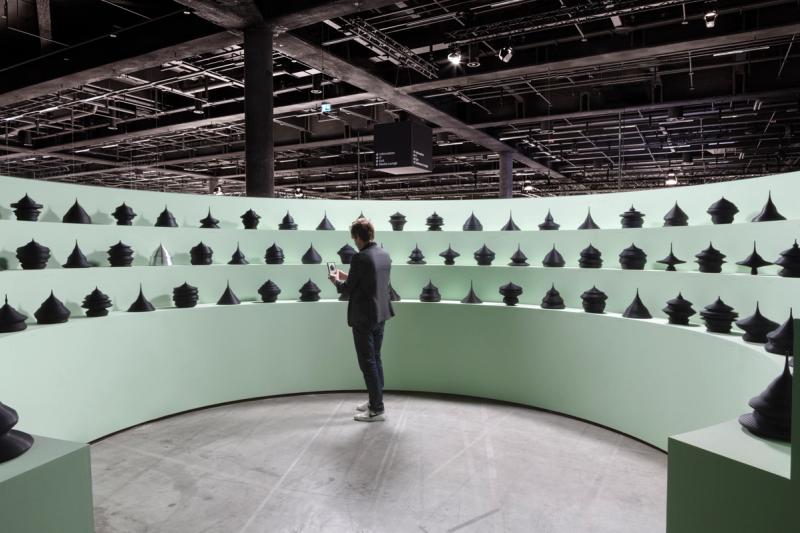
At the Triennale di Milano, French designer Mathieu Lehanneur will debut “Inventory of Life” (Viale Emilio Alemagna, 6), an exhibition of four large-scale installations curated by Maria Cristina Didero. Scientific data from the United Nations, the World Health Organization, and satellite-generated photographs, commissioned specifically for the occasion, inform each gallery. Rising sea levels and the meanings behind the nuanced colors of the ocean will be among the subjects tackled. “Superbloom” (Viale Umbria, 49), an exhibition by the Los Angeles design collective Rios, also looks to nature—specifically, the rare phenomenon its presentation is named for, in which large quantities of wildflowers, whose seeds have laid dormant in desert soil, germinate and blossom at the same time. Three immersive rooms will simulate, in a multisensorial way, the occurrence’s biological processes, including the watering, propagating, and blossoming of flora, to dazzling effect.
The feeling that the pandemic has shifted the consciousness of the larger global design community and given it renewed purpose resonates with Milanese architect Paolo Brambilla. “Design has taken on a new role, which is one of responsibility, sustainability, and for people, in addition to the planet,” he says. Together with his business partner, architect Fabio Calvi, Brambilla served as a design curator for “See the Stars Again” (Via Orobia, 15), a presentation by the Italian lighting company Flos that features a robust program of talks, workshops, and entertainment activities that celebrate the 60th anniversary of the brand and of its beloved fixture the Arco lamp, designed by brothers Pier Giacomo and Achille Castiglioni. (The Slowdown produced the audio component of the exhibition, to illustrate the stories behind the lighting fixtures on view via a “mini-podcast” format.) This effort offers multiple ways for visitors, inside the industry and out, to connect with the pieces on view—something that was key for both Flos and Brambilla. “Design does not make sense if it’s exclusive,” he says. “At the end of the day, Flos is a human-centered design company. And I think this kind of spirit will be reflected in the events and experiences you’ll see during design week.”
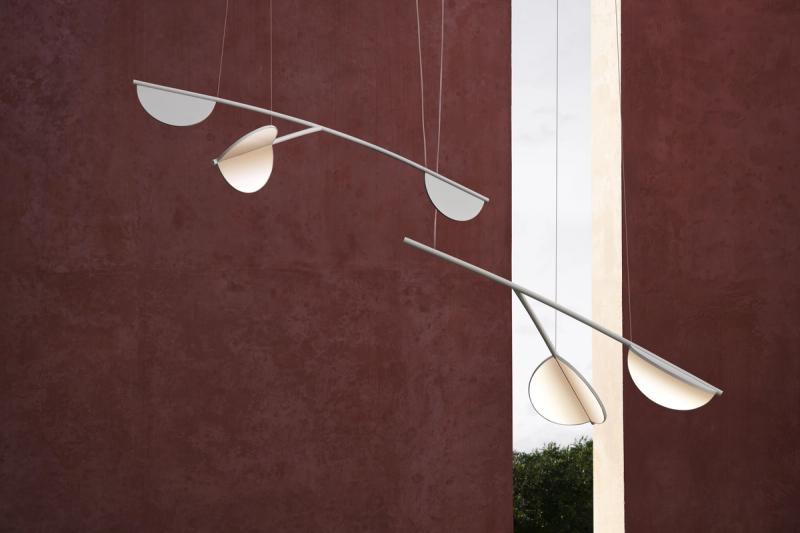
An emphasis on the environmental benefits of high-quality craftsmanship—including its traits of longevity and reverence for materials—will be evident in various presentations around town. In its Milan flagship store, the Danish furniture brand Carl Hansen & Søn (Via Arco, 4) will introduce two projects: a collaboration with London-based designer Ilse Crawford that sees Hans J. Wegner’s iconic Wishbone chair (1949) rendered in nine matte colors, to mark seven decades of its production by the company, and a reintroduction of the high-backed, solid oak Windsor chair (1938), designed by architect and cabinetmaker Frits Henningsen, that was continuously in production until 2003. The latter, now with a leather seat cushion, involves multiple carpentry techniques and requires an experienced joiner to make it; the sculptural result speaks to the vast possibilities of its material in the right hands.
Expertly crafted wood furniture also appears in “Cipango: Japan Reimagined” (Via Alessandro Tadino, 2), an exhibition, set in a residential apartment, curated by The New Era editor-in-chief Hanna Nova Beatrice and Gabriel Tan, creative director of the Japanese design brand Ariake, which is presenting the project—its Milan Design Week debut. The made-in-Italy collection includes pared-down pieces by Inga Sempé, Keiji Ashizawa, Norm Architects, Neri & Hu, and Zoë Mowat. Another Japanese brand (and Milan Design Week first-timer) called Koyori will reveal its inaugural collection—singular wood chairs by Paris-based brothers Ronan and Erwan Bouroullec, and by the Danish-Italian design duo GamFratesi—at the Triennale di Milano, in an exhibition titled “The Twist: Cultural and Emotional Crossings.”
Artistry will abound in several other standout presentations: The Italian glass-mosaics company Bisazza (Via Solferino, 22) will debut new mosaics from both the French architectural firm Studio KO and the Venetian architect Carlo Dal Bianco; the Italian design brand Vero (Via Felice Casati, 3) will offer its second collection, in a streetwear-style drop, that includes refined pieces by New York artist Sam Stewart and the Venice design studio Zaven; and the sixth Doppia Firma exhibition (Corso Magenta, 24), presented by the Michelangelo Foundation, will show a series of commissioned pieces by designer-artisan pairs, including India Mahdavi and Longwy; Atelier Oï and Wonder Glass; and Philippe Nigro, with Jeff Mack and Chris Rochelle.
In addition to the Milan Design Week stalwarts Hermès (Via Turati, 34) and Louis Vuitton (Via Bagutta, 2), this year several other luxury fashion brands are coming to town with projects, installations, and activations, too. Among them is Dior, with Miss Dior (Via Brera, 12), a fresh version of Philippe Starck’s iconic Louis Ghost armchair (2002), reimagined by the French designer for the Parisian fashion house, whose founder admired the Louis XVI style that informed the original seat. This iteration sees the chair, manufactured in Italy using the world’s only injection-molding machine capable of creating its distinctive shape, in aluminum. At the Salone fairground, the Italian cashmere and fabric house Loro Piana, via its interiors arm, will have a presence in the Italian design brand Exteta’s booth, where it will showcase the Delight St. Moritz, an elegant interpretation of the classic director’s chair by Italian designer Paola Navone, upholstered in its latest textiles. (Also worth mentioning, but not elaborating on, is that both Ralph Lauren and Dolce & Gabbana, respectfully, will be touting their newly opened home-centric “World of” and “Casa” Milan outposts.)
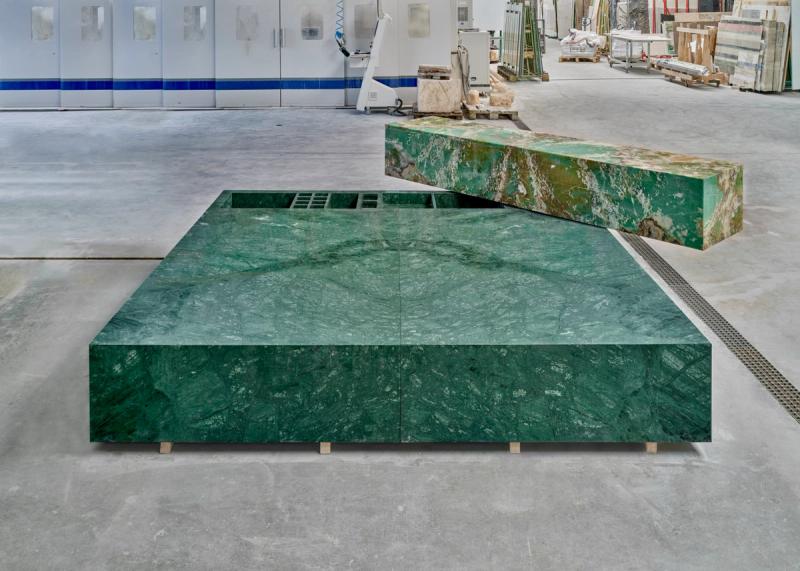
Compared with bulky pre-pandemic Salones of yore, this year’s fair will still be a somewhat slim affair. Festivities and brand exercises aside, the reality of a world still in recovery remains. Nicolas Bellavance-Lecompte, co-founder of the roving design fair Nomad and owner of Carwan Gallery in Athens, says, “For me, we are not back to the previous idea of what Salone was,” noting that Covid-19-related travel restrictions and ongoing sanctions will surely reduce the number of exhibitors and visitors from Asia and Russia, though he does expect more Americans than usual this year. He also anticipates a greater presence of companies that overcame recent economic setbacks. Many brands have “reinvented themselves,” he says, “and the economy has reinvented itself. So this Salone will be a culmination of a new market typology, led by those who managed to have success during the pandemic.”
Bellavance-Lecompte himself is maintaining a positive outlook toward the future, with plans to bring his traveling fair to a new, strategic location—a Mediterranean island—in July. He and guests will toast next week during a Nomad Capri cocktail (Corso Italia, 47). Ever interested in the up-and-coming and what’s new and next, he’s eager to see the works on view at Alcova (Via Simone Saint Bon, 1), where exhibitions by established and emerging designers (including one from wallpaper company Superflower Studio, co-founded by Nicole Bergen and The Slowdown’s Andrew Zuckerman) look inward, outward, and beyond.
Elsewhere, certain brands will reflect on the time ahead by embracing technology. “A Life Extraordinary in Milan” (Via S. Gregorio, 29), a presentation by the Dutch design brand Moooi, will include a multi-sensory experience of tech-enabled interiors, made in collaboration with IDEO and LG OLED, and with Polish artist Ada Sokol. Another forward-looking happening, Lexus’s “Sparks of Tomorrow” (Via Tortona, 27), expands on the car company’s future-oriented approach to design with various installations. They include the environment “On/,” featuring a to-scale steel sculpture of the RZ, the first dedicated electric model in Lexus’s lineup. Other parts of the presentation include prototypes from Lexus Design Award 2022 finalists and projects by postgraduate students from the Intelligent Mobility Design program at London’s Royal College of Art, which comprise inventive vehicle designs that address today’s environmental challenges.
Taken together, the many events slated for this year’s design week suggest that as the world evolves—and the design industry with it—the enduring relevance of the event will remain unchanged. Still, it may become, for the better, more concerned with nature and the planet. And as with our present-day reality, it won’t be returning to “normal” any time soon, or at least until next year. “Many people are still afraid to go full-on with events and presentations,” Bellavance-Lecompte says. “But Milan has always been the most important global appointment for the industry. I think it will keep its role in that way.” Only time, and the 2023 edition, will tell. Perhaps by then the annual gathering will not only be back in full force, but also be empowered by a shared sense of design’s profound impact on life on earth.